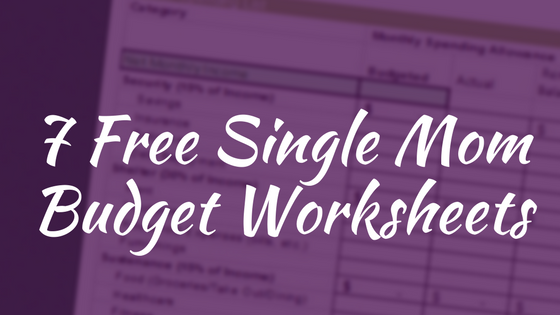 Do you find that you don’t have enough money at the end of the month? Have you been stressing out about how to make ends meet even though you make enough money to live? Why does money seem to disappear when you need it the most?
Do you find that you don’t have enough money at the end of the month? Have you been stressing out about how to make ends meet even though you make enough money to live? Why does money seem to disappear when you need it the most?
If you are struggling with this it’s probably time to create a spending plan.
Without a plan for anything in life you run the risk of losing control and heading down a self-destructive path. Your money is no different.
If the thought of creating a spending plan sounds overwhelming, here are a few tips to help you make one in under an hour.
Estimates and Actuals, not Ideals
Remember that your spending plan is a tool, not a dream machine. Goals are important, but a family spending plan should first focus on the numbers you’re dealing with. That’s the basic first step. Once you have a grasp on that, you can begin a bit more idealizing, such as saving for vacations, desired items, etc.
Start with Your Net Income
First, figure out your net income for each month. This means your income minus taxes, insurance, 401K deductions, and so forth. If you are self-employed, subtract estimated taxes, insurance costs, retirement account savings, etc. At this point, you just need numbers.
Expenses – Keep Categories General
Next, figure out your monthly expenses. If they vary, figure out an average by looking at the last three to six months’ worth of expenses. For instance, if your electric bill was $150 last month, $140 the month before, and $175 the month before that, then you can estimate a monthly expense of around $155 for electricity. Alternatively, you could take the highest amount, $175, and go with that.
It’s a good idea to keep your categories as general as possible while still preserving clarity. Otherwise, you might get confused or overwhelmed by all the “hair splitting.” For example, instead of having “food, paper products, drug items, etc.” as categories, you can lump all those expenses under “groceries.” Items like “pet supplies” can be their own category, but you might want to include vet bills in that category. Here are some suggestions for categories:
- Charitable giving
- Payment off debt
- Home (mortgage, rent, property tax, insurance, repairs, etc.)
- Vehicle
- Utilities
- Health Care
- Birthday and Christmas gifts
- Cushion (this is money set aside to offset surprises, mistakes, or unexpected expenditures)
- Personal (eating out, hair appointments, etc.)
Stop and Look
At this point, stop and take a look at what you’ve got so far. Are your expenses greater than your income? It’s time to cut back significantly, or find another source of income (or both).
Actual Expenses
So far, you have two columns – income and estimated expenses. Now you need to add another column: actual expenses. Keep track of the real numbers each week over the next month and see how much/if they differ.
Now you’re well on your way to a workable spending plan!












